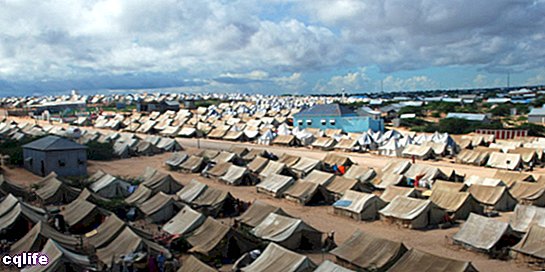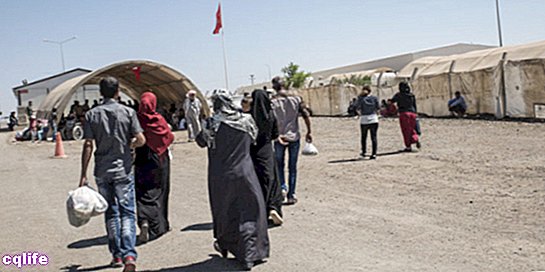- What is external migration?
- Causes of external migration
- Consequences of external migration
- Types of migration
- Examples of external migration
- Internal migration
We explain what external migration is and what its causes and consequences are. Also, the types of migration and some examples.

What is external migration?
It is understood by external migration or migration international to one that comes from countries or regions different (and often far away) from the destination. In other words, we speak of external migration to distinguish it from migration from sectors of the same country or from the same country. region. This is especially relevant if there is a border crossing between the regions of origin and destination.
This difference between external and internal migration allows the study and measurement of the migratory flow to and from a given region, thus building a migratory balance or migratory balance, which is the difference between emigration and immigration. Those countries whose citizens tend to migrate show negative migratory balances, while those that usually receive migrants show positive migratory balances. Note that these terms are of the nature math and not appreciative (a positive balance does not necessarily mean something good or bad).
Throughout the history There have been enormous external migrations, especially those motivated by conflicts large-scale warfare. When the capacity to receive the number of migrants exceeds a nation, refugee or displaced crises often occur, if not humanitarian crises.
Causes of external migration

External migrations can be due to different factors, such as:
- Wars, military, political or civil conflicts, as well as other reasons of force majeure that force to leave the country of origin (natural disasters).
- Poor living conditions in the country of origin and better in the country of destination, which causes economic migration.
- Personal reasons that lead to pursue immigration, such as infatuation or individual life chances.
Consequences of external migration
Similarly, external migrations have different consequences, such as:
- Growth of labor force in the destination country, as well as the demand for work, the consumption and the total amount of population.
- Enrichment of the cultural, social and even genetic heritage in the community destination, thanks to the arrival of new individuals.
- Growth of foreign investment, given that many migrants carry capital with them.
- Contribution to the country of destination of new knowledge from the country of origin.
Types of migration

A country can be both a recipient of immigrants and a producer of emigrants.
Human migrations are usually understood according to their direction: within or outside of a specific country. Thus, we can speak of emigration (when the migrants leave) and immigration (when the migrants arrive). A country can be both a recipient of immigrants and a producer of emigrants, but generally one of the two trends prevails.
Similarly, we can speak of temporary migration, for those cases in which the migrant individual spends an indefinite time in the country of destination and later returns to the country of origin, and permanent migration, when said return to the origin does not occur, and the migrant is it incorporates the fixed population of the destination country.
Examples of external migration
Throughout history there have been many, many examples of external migration. In the times of WWII, For example, him continent American received veritable waves of Spaniards, Portuguese, Italians and citizens from other European countries seeking new opportunities in conflict-free territories.
In recent times, on the other hand, the citizens of African countries have sustained a prolonged external migration towards Europe, looking for better conditions of life and fleeing in many cases from terrorist groups or Islamic radicalism. The same has happened within the South American continent, where the citizens of Venezuela have emigrated en masse to countries such as Colombia, Peru, Ecuador, Chile, Brazil and Argentina, reaching in a few years the figure of almost 4 million migrants, due to the brutal impoverishment of the quality of life social, economic and political in that country.
Internal migration

Unlike external migration, internal migration occurs within the borders of the same country or the same region, without changing nationalities in the process. This means that the migrants come from other regions of the same country, for example, as happened with the rural exodus during the 20th century, in which many inhabitants of the rural regions of the West migrated towards the main cities of their countries, aspiring to join industrial living and working conditions.
